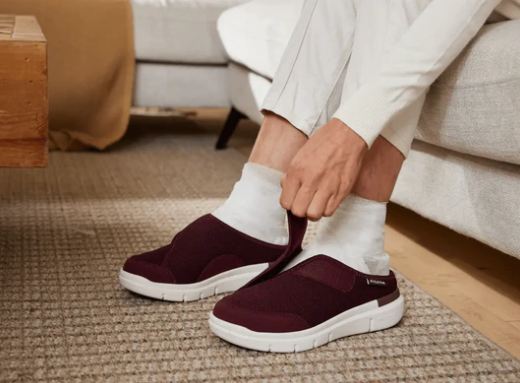Notifications

6 minutes, 1 second
-39 Views 0 Comments 0 Likes 0 Reviews

Living with diabetes requires paying close attention to your health from head to toe—literally. One of the most critical but often overlooked elements of diabetic care is proper footwear. For people who spend long hours on their feet—whether at a job site, in a kitchen, or on a hospital floor—having the right diabetic work shoes is essential. They don’t just provide comfort; they help prevent complications like pressure ulcers, calluses, and infections.
In this post, we’ll break down what to look for in diabetic work shoes, and share some of the best features to ensure you stay supported, safe, and pain-free on the job.
Diabetes can cause reduced circulation and peripheral neuropathy (nerve damage), making your feet more susceptible to injury and less able to feel pain or pressure. Ill-fitting or unsupportive shoes can lead to sores, blisters, and even long-term foot problems.
Work environments often add extra challenges—hard floors, long hours, or slippery surfaces. That’s why diabetic work shoes must do more than just fit well; they need to protect and support you throughout the day.
Diabetic-friendly shoes typically have a deeper and wider toe box to accommodate swelling, hammertoes, or bunions, and prevent friction or pressure points.
Look for shoes with cushioned or orthotic insoles that absorb shock and reduce pressure on the feet. Memory foam, EVA midsoles, or gel inserts can provide that “walking on clouds” feeling even during long shifts.
For safety on the job, especially in industrial, healthcare, or food service settings, slip-resistant soles are non-negotiable.
Velcro straps or laces that offer a customizable fit can help accommodate swelling or high insteps throughout the day.
Shoes with smooth interiors reduce the risk of rubbing, blisters, or pressure ulcers. Diabetic shoes often avoid internal seams entirely.
Mesh or perforated materials keep feet cool and dry, reducing the risk of fungal infections or skin irritation.
Look for diabetic work boots with steel toe options and shock-absorbing soles.
Brands like Orthofeet and Propet offer reinforced yet cushioned boots designed for safety and comfort.
Nurses and caregivers are on their feet all day. Shoes like FitVille’s EasyTop StrapEase or HeelAero Walking Shoes provide arch support, wide toe boxes, and anti-slip soles for hospital floors.
Non-slip soles are key in kitchens or fast-paced restaurants. Lightweight diabetic sneakers with Velcro closures can reduce fatigue and adjust easily as feet swell during a shift.
One standout option for work is the FitVille EasyTop Diabetic Shoes, designed with features tailored specifically for diabetics:
Wide and Extra-Wide Sizes (up to 6E): Perfect for swollen feet, bunions, or custom orthotics.
Cushioned Collar & Seamless Lining: Prevents irritation and friction during long hours.
Adjustable Velcro Straps: Makes it easy to customize the fit on the go.
Slip-Resistant Rubber Outsole: Provides stable footing on a variety of surfaces.
Orthotic-Friendly Insole: Ergonomic support with shock-absorbing cushioning to reduce fatigue.
Whether you’re walking hospital corridors or standing behind a register, FitVille’s diabetic work shoes combine safety with comfort for all-day wear.
Measure your feet regularly. Diabetes can cause foot shape and size to change over time.
Try shoes on later in the day, when feet are more likely to be swollen.
Wear the socks you’ll use at work when trying on new shoes.
Break in shoes gradually to ensure comfort and avoid blisters.
Wearing the right diabetic work shoes is more than just about comfort—it’s a matter of protecting your health and quality of life. Investing in supportive, well-constructed shoes can help prevent complications and keep you moving safely and confidently, shift after shift.
Whether you need the durability of a work boot, the slip-resistance of a food service shoe, or the all-day cushioning of a healthcare sneaker, there are diabetic shoes designed for the job.
Your feet work hard. It’s time your shoes did too.

